
Exploring Fungal Morphology Simulation and Dynamic Light Containment from a Graphics Generation Perspective
View more Video link
Fungal simulation and control are considered crucial techniques in Bio-Art creation. However, coding algorithms for reliable fungal simulations have posed significant challenges for artists. This study equates fungal morphology simulation to a two-dimensional graphic time-series generation problem. We propose a zero-coding, neural network-driven cellular automaton. Fungal spread patterns are learned through an image segmentation model and a time-series prediction model, which then supervise the training of neural network cells, enabling them to replicate real-world spreading behaviors. We further implemented dynamic containment of fungal boundaries with lasers. Synchronized with the automaton, the fungus successfully spreads into pre-designed complex shapes in reality.
View more Video link
Fungal simulation and control are considered crucial techniques in Bio-Art creation. However, coding algorithms for reliable fungal simulations have posed significant challenges for artists. This study equates fungal morphology simulation to a two-dimensional graphic time-series generation problem. We propose a zero-coding, neural network-driven cellular automaton. Fungal spread patterns are learned through an image segmentation model and a time-series prediction model, which then supervise the training of neural network cells, enabling them to replicate real-world spreading behaviors. We further implemented dynamic containment of fungal boundaries with lasers. Synchronized with the automaton, the fungus successfully spreads into pre-designed complex shapes in reality.
Fungal Morphology, Cellular Automata, Generative Art
Personal Work
(Jun - Sep 2024)
🥇In Proceedings of SIGGRAPH Asia Art Papers 2024.
![]()
![]()
![]()
Personal Work
(Jun - Sep 2024)
🥇In Proceedings of SIGGRAPH Asia Art Papers 2024.





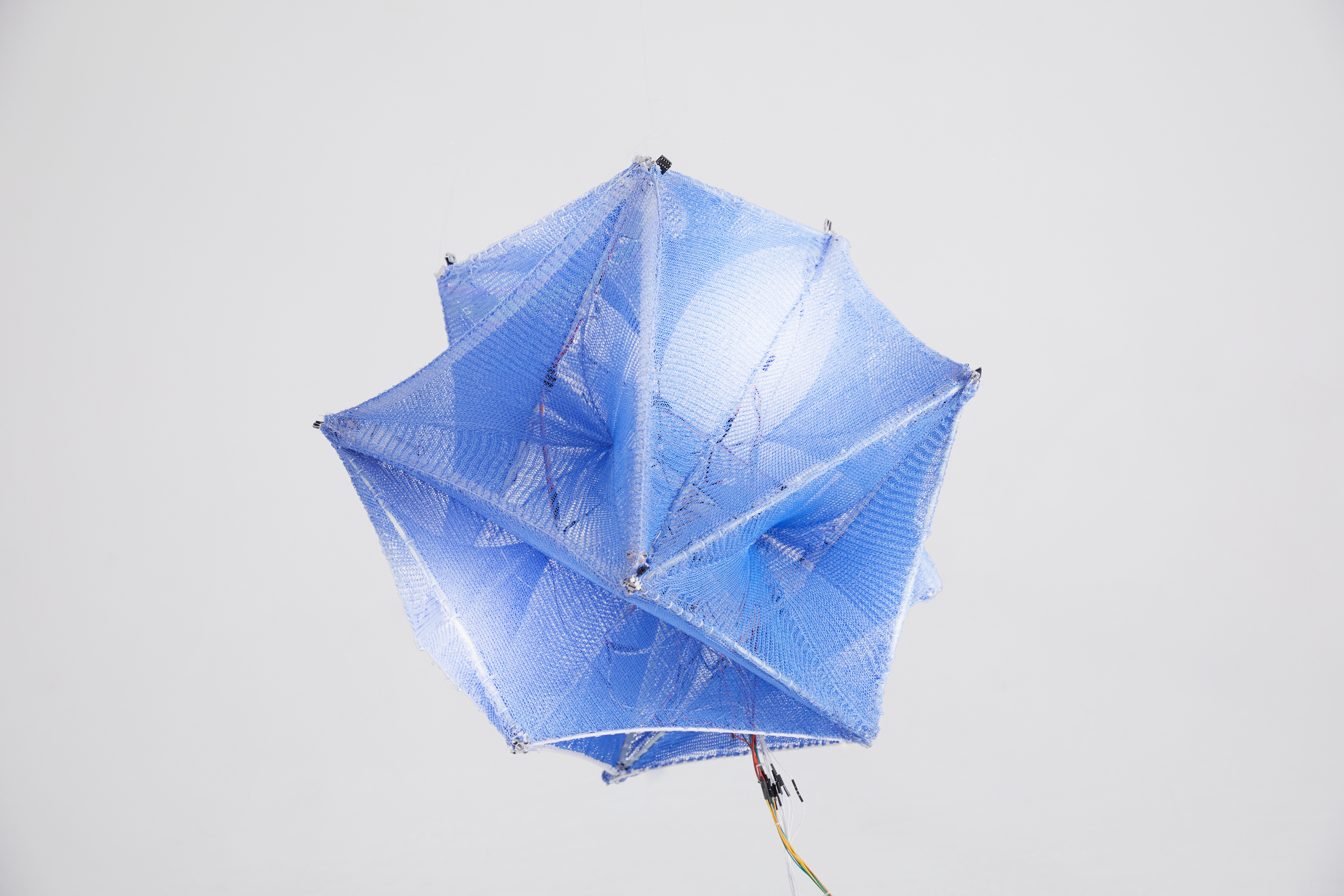
DYNAMIC LIVING
· Knitted pneumatic robot based on tensile structure
View more Video link
To form the concept of so-called "cities", human habits should not be completely separated from the natural environment. This project proposes a new approach to the division of human living space: to find a new way of dividing space that is dynamic and responsive to the natural environment, starting with the optimal human-nature relationship.
· Knitted pneumatic robot based on tensile structure
View more Video link
To form the concept of so-called "cities", human habits should not be completely separated from the natural environment. This project proposes a new approach to the division of human living space: to find a new way of dividing space that is dynamic and responsive to the natural environment, starting with the optimal human-nature relationship.
Robotics, Textile
Personal Work
(May - Dec 2022)
![]()
Personal Work
(May - Dec 2022)

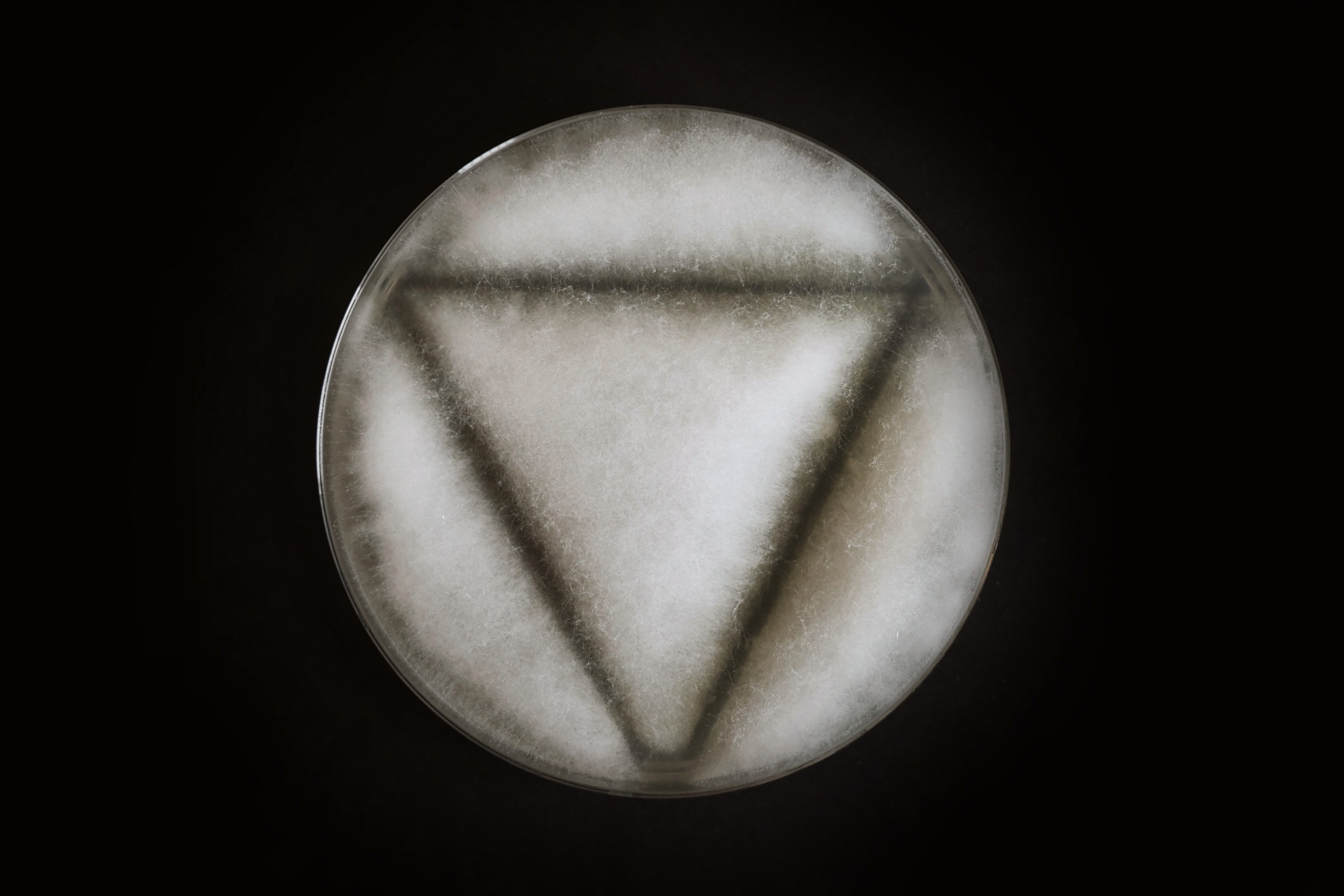
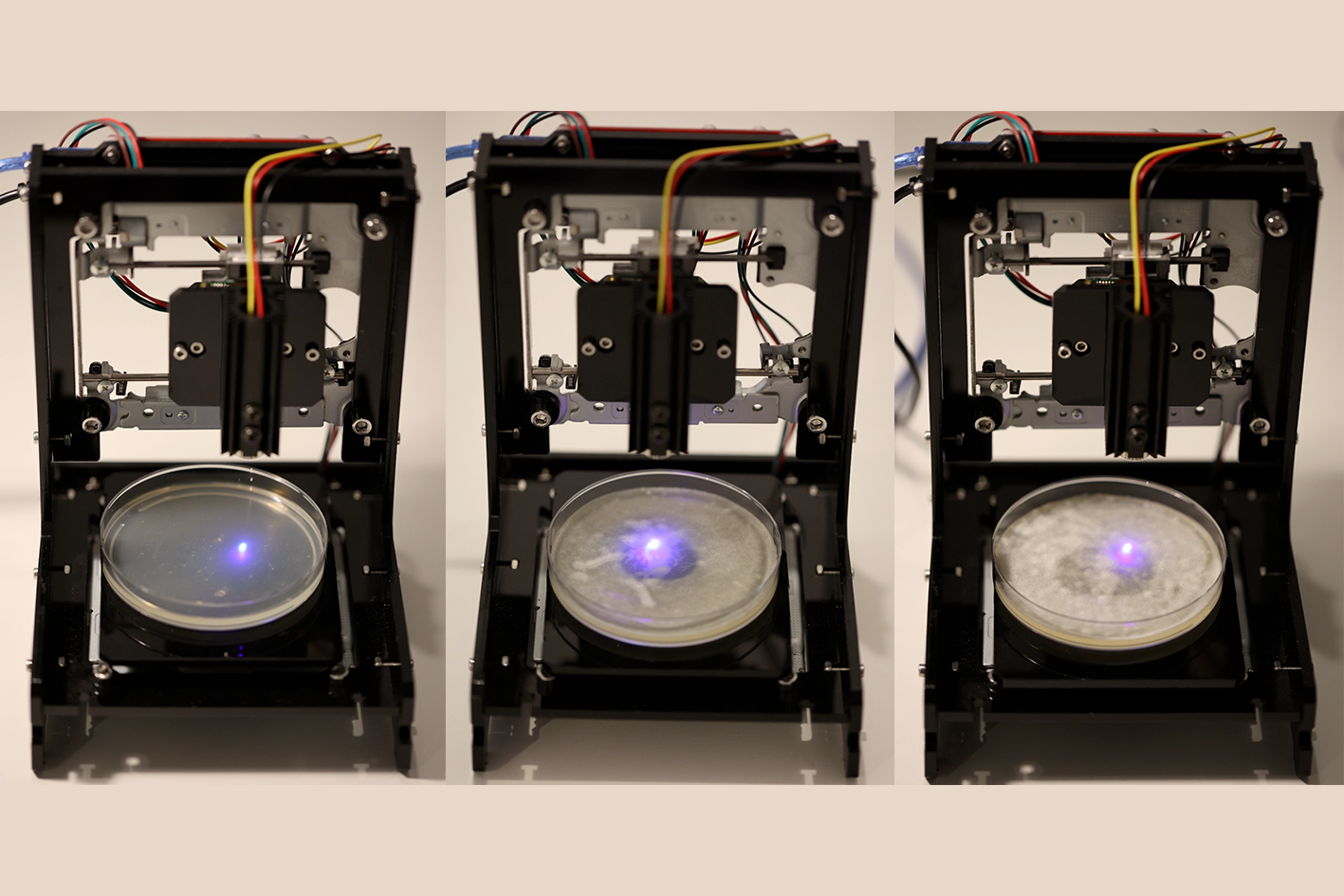

MYCELIAN I
· Automated use of UV laser to control fungi growth pattern in 2D
View more Video link
'Mycelian' is a project that develops a cross-species basic language system for transferring information to fungi by manipulating the intensity and shape of light. A possibility called nature-assisting human design and construction is proposed to break the inertia of human beings alone in the past.
· Automated use of UV laser to control fungi growth pattern in 2D
View more Video link
'Mycelian' is a project that develops a cross-species basic language system for transferring information to fungi by manipulating the intensity and shape of light. A possibility called nature-assisting human design and construction is proposed to break the inertia of human beings alone in the past.
Biodesign, Material
Personal Work
(Jan - Jul 2022)
![]()
Personal Work
(Jan - Jul 2022)

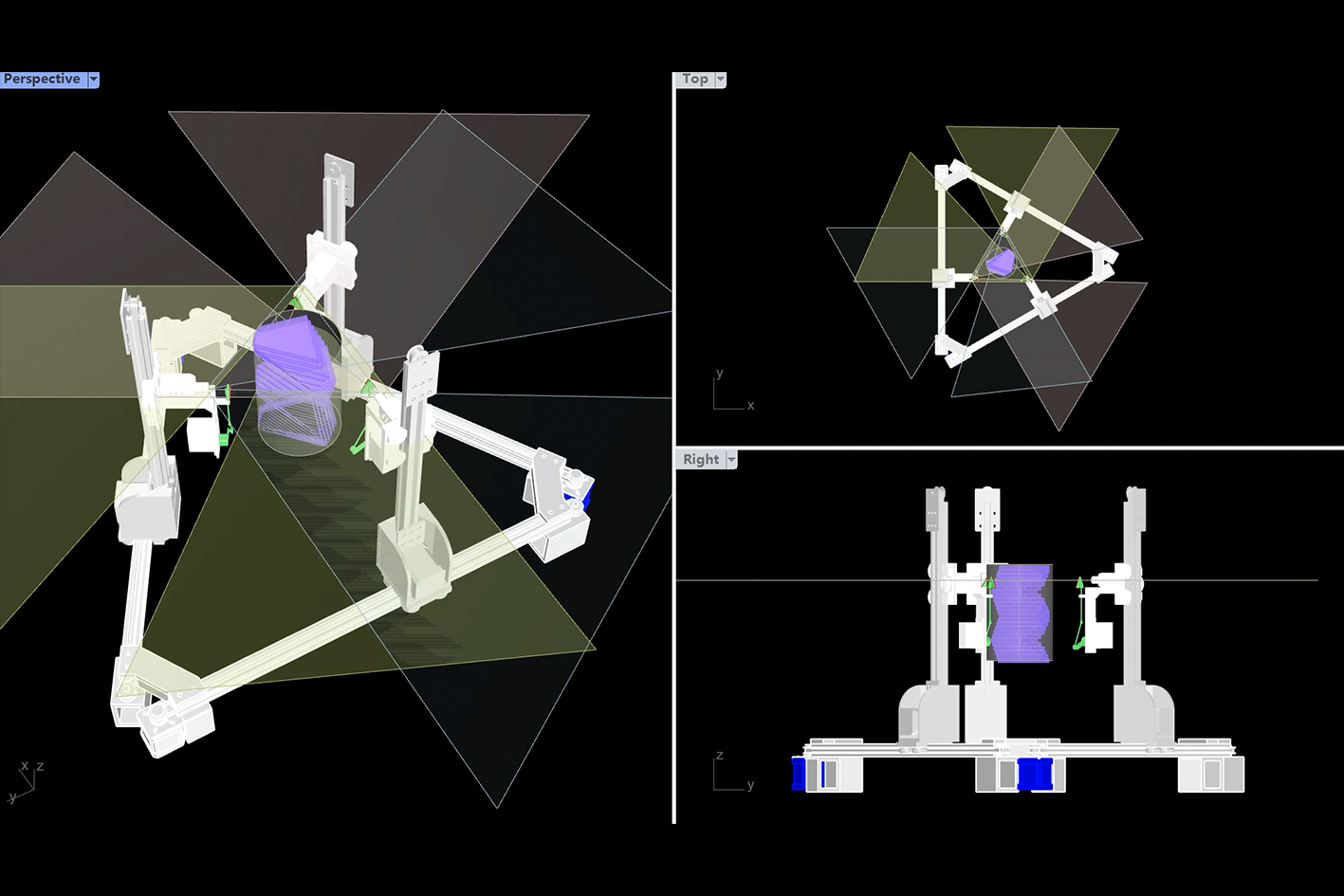
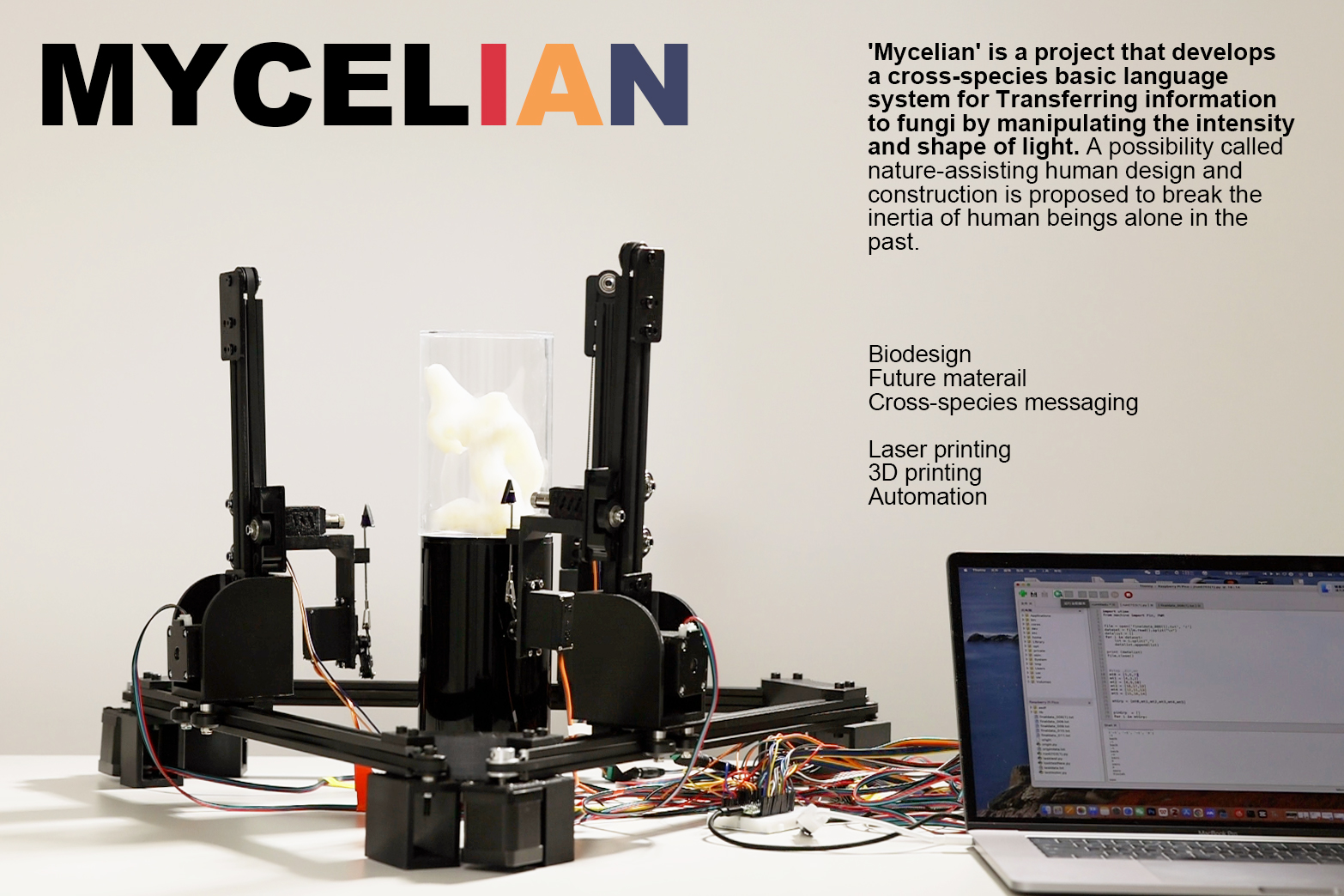

MYCELIAN II
· Automated use of UV laser to control fungi growth pattern in 3D
View more Video link
This project represents an advanced iteration of the “Mycelian I”, evolving to incorporate 3D control mechanisms following “Mycelian I”'s successful implementation of controlling fungal growth patterns on a 2D plane.
· Automated use of UV laser to control fungi growth pattern in 3D
View more Video link
This project represents an advanced iteration of the “Mycelian I”, evolving to incorporate 3D control mechanisms following “Mycelian I”'s successful implementation of controlling fungal growth patterns on a 2D plane.
Biodesign, Material
Personal Work
(Jan - Jul 2022)
![]()
Personal Work
(Jan - Jul 2022)


MYCELIAN III - MUFER ︎ coming soon...
· Fur-textured fungal fabrics
This study explores a novel type of bio-composite material designed to mimic the texture and appearance of fur by fostering a symbiotic relationship between Mucor mold and Shiitake mushrooms. Aimed at providing an eco-friendly and ethical alternative to fur, this unique biomanufacturing process leverages the distinct properties of both fungi: the mycelium of Shiitake mushrooms forms a durable base, while the Mucor mold imparts a fur-like texture and appearance to the material.
· Fur-textured fungal fabrics
This study explores a novel type of bio-composite material designed to mimic the texture and appearance of fur by fostering a symbiotic relationship between Mucor mold and Shiitake mushrooms. Aimed at providing an eco-friendly and ethical alternative to fur, this unique biomanufacturing process leverages the distinct properties of both fungi: the mycelium of Shiitake mushrooms forms a durable base, while the Mucor mold imparts a fur-like texture and appearance to the material.
Biodesign, Material
Personal Work
(Jun 2023 - currently)
![]()
![]()
Personal Work
(Jun 2023 - currently)



MYCELIAN IV - DIVERSE FUNGAL MATERIAL
PRINTER ︎ coming soon...
· Printers that can be customized with diverse fungal materials
This research utilizes the material properties of different fungal species and their distinct responses to light, such as the fur-like texture of Mucor and the leather-like texture of Shiitake mushrooms. It delves into how Shiitake mycelium undergoes browning when exposed to light, and how fungi exhibit negative phototropism growth patterns. The study has developed a method for creating a variety of fungal materials. Previously, the range of fungal materials was quite limited, constraining their potential applications. However, with this new technology, it is now possible to use standard two-dimensional laser cutting machines to produce fungal materials with unique colors, textures, and shapes.
PRINTER ︎ coming soon...
· Printers that can be customized with diverse fungal materials
This research utilizes the material properties of different fungal species and their distinct responses to light, such as the fur-like texture of Mucor and the leather-like texture of Shiitake mushrooms. It delves into how Shiitake mycelium undergoes browning when exposed to light, and how fungi exhibit negative phototropism growth patterns. The study has developed a method for creating a variety of fungal materials. Previously, the range of fungal materials was quite limited, constraining their potential applications. However, with this new technology, it is now possible to use standard two-dimensional laser cutting machines to produce fungal materials with unique colors, textures, and shapes.
Biodesign, Material
Personal Work
(Oct 2023 - currently)
🥇Brown University Hazeltine Maker Grant
![]()
![]()
Personal Work
(Oct 2023 - currently)
🥇Brown University Hazeltine Maker Grant



MYCELIAN V - FUNGAL CIRCUITS ︎ coming soon...
· Conductive fungal material for green circuit boards
The field of bioelectronics has explored the intrinsic conductivity of melanin, and the correlation between Shiitake melanin production (browning) and UV light exposure has led us to propose using UV lasers to guide specific circuit patterns on a fungal substrate. This approach enables the formation of biocircuits that are conductive only in areas rich in melanin. This research aims to pioneer a novel method in the fabrication of purely fungal circuits, pointing towards a future of green electronics.
· Conductive fungal material for green circuit boards
The field of bioelectronics has explored the intrinsic conductivity of melanin, and the correlation between Shiitake melanin production (browning) and UV light exposure has led us to propose using UV lasers to guide specific circuit patterns on a fungal substrate. This approach enables the formation of biocircuits that are conductive only in areas rich in melanin. This research aims to pioneer a novel method in the fabrication of purely fungal circuits, pointing towards a future of green electronics.
Biodesign, Material
Personal Work(Sep 2023 - currently)
![]()
![]()
Personal Work(Sep 2023 - currently)

